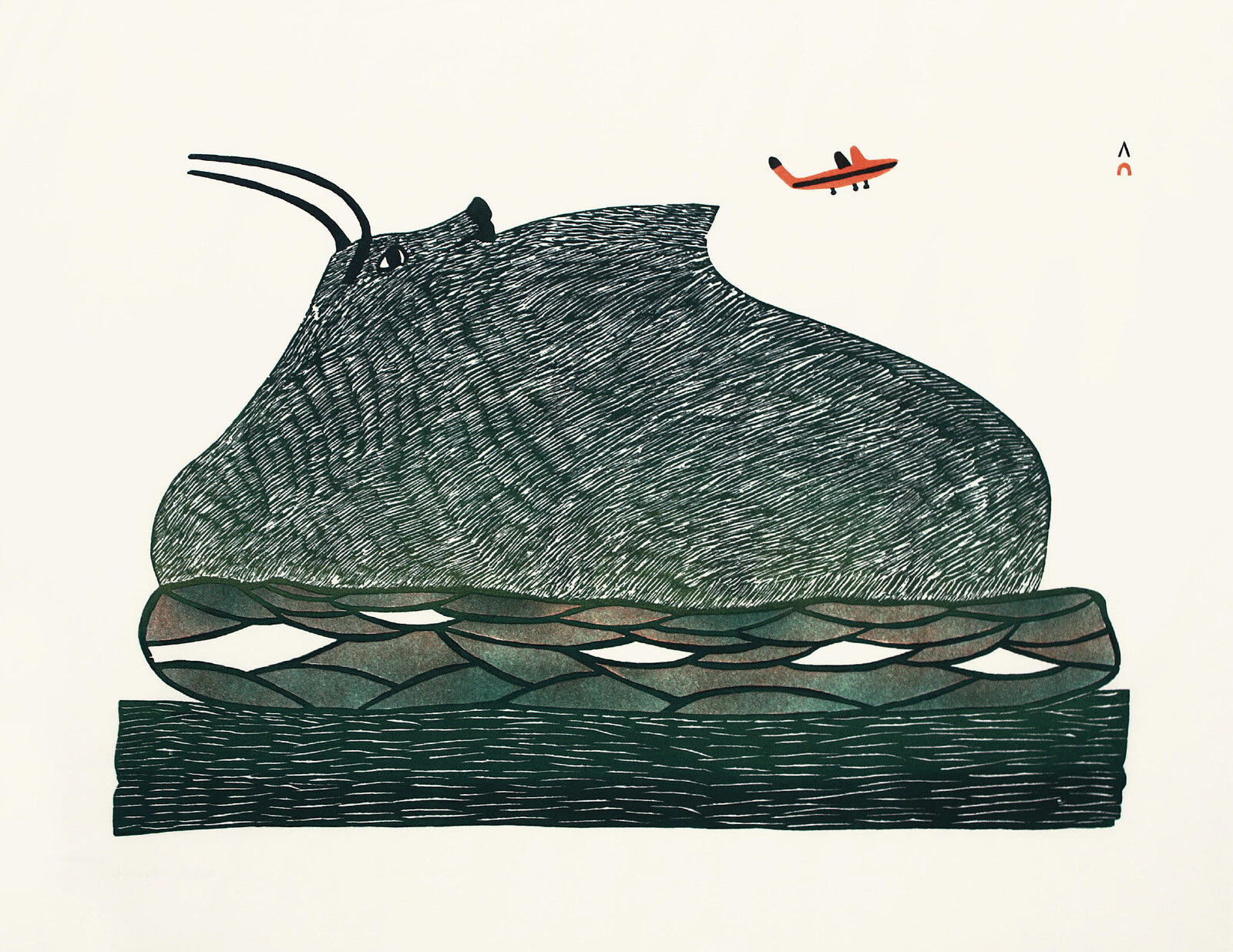Kinngait, Nunavut—The Claude Baud and Michel Jacot Collection
October 2, 2024–January 17, 2025
130, rue du Faubourg Saint-Honoré
75008 Paris
France
Hours: Monday–Friday 10am–6pm
T +33 1 44 43 21 90
info@canada-culture.org
This exhibition is organized in partnership with the West Baffin Cooperative in Kinngait, Nunavut.
Curator: Catherine Bédard
To celebrate the 25th anniversary of the creation of the territory of Nunavut, Canada, and the 65th anniversary of Kinngait’s West Baffin Cooperative, located on Dorset Island in southwestern Baffin Island, the Canadian Cultural Centre is re-deploying its historic exhibition, Fantastic Kenojuak Ashevak (2013), with a new set of prints and sculptures from the prestigious Claude Baud and Michel Jacot collection. The exhibition illustrates both the richness of a cooperative that is unique in the world, and the vision of a franco-swiss collecting duo who, for decades, have contributed to bringing Inuit art of Canada to France.
This exceptional ensemble is complemented by a body of previously unseen works by the now-famous Shuvinai Ashoona, whose participation in the Venice Biennale in 2022 received a special mention from the jury. A prolific artist working within her own community in the Far North and among other artists, she is the granddaughter of Pitseolak Ashoona, herself a major figure in the first generation of artists from the Kinngait Studio founded in 1959 and featured in the Baud-Jacot collection.
With a singular curatorial approach inspired by the collectors’ sensitivity, passion and respect for the formal power, bestiary, symbolic figures and spirit of Inuit art, the exhibition brings together nearly 130 works associated alternately by artists, themes (owls, ravens, musk oxen, Arctic ocean spirits, legends and cosmogony, Old and New Worlds) or by stylistic and formal structures or resonances (mirror compositions, metamorphic sculptures balanced on one foot, or etchings and aquatints versus woodcuts). Thus we see Ningeokuluk Teevee’s The First Owl (engraved on stone by Quiatsuk Niviaqsi and Qavavau Mannumi) overcoming a composition of works on this theme, from the many Kenojuak Ashevak to Mayoreak Ashoona’s Tundra Owl. On another wall, this time side by side, we can observe Pudlo Pudlat’s formidable musk oxen returning from engraving to engraving, colossal forms where the fur is transformed into a superb study of lines, around which the artist tells hunting stories. Here we discover a few airplanes, one of them clinging to a horn, that speak of the Winds of Change and the Vision of Two Worlds.
Sequences, associations and imaginary drifts unfold throughout the exhibition, in response to what the Inuit art of this exceptional cooperative—the oldest social cooperative of its kind in Canada’s Far North—provokes, letting the works themselves speak of the culture and imagination of a specific local population, that of Kinngait.
Filmed a few weeks before the exhibition opened, videos by Kineta Mathewsie, a young Inuit film student at the Northern Alberta Institute of Technology, who was an intern at Kinngait Studio during the summer of 2024, punctuate the exhibition, allowing visitors to immerse themselves in the context of the village from which all the works in the exhibition originate.
Without claiming to circumscribe the complexity of the community it exhibits, this exhibition focuses on almost 50 years of production at the Kinngait Studio, on the vision of two collectors who are strangers to this context but deeply admiring of it, but also on the sensitive, critical and indispensable issue of the relationship with the other, understood here in both directions, in a reciprocity shifted in time and space.

